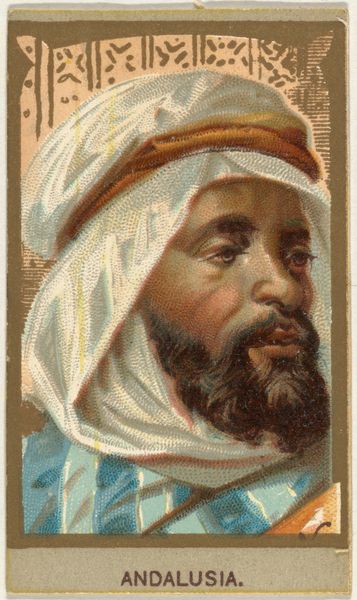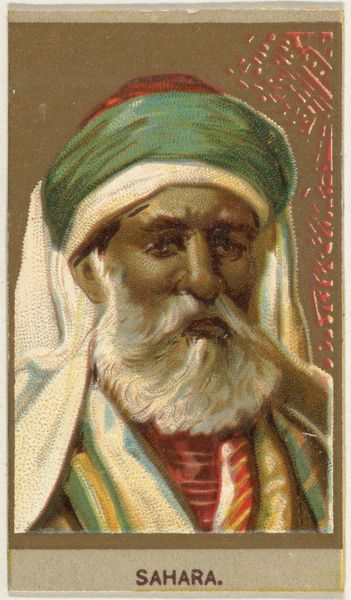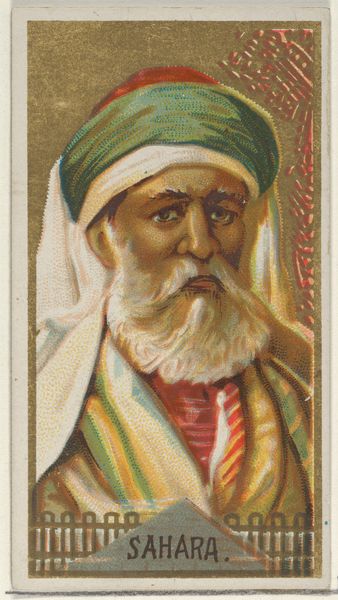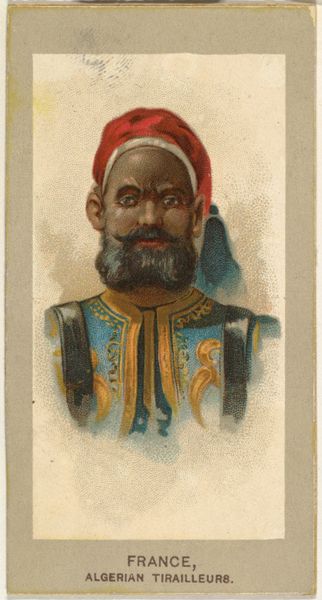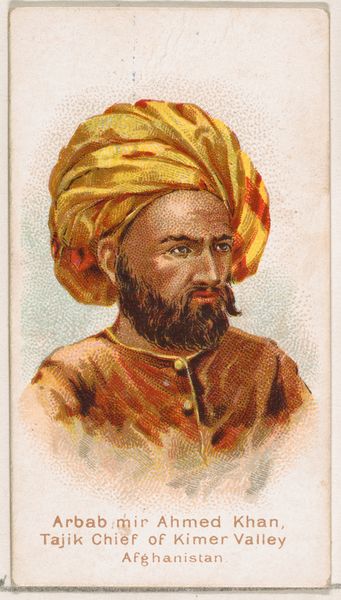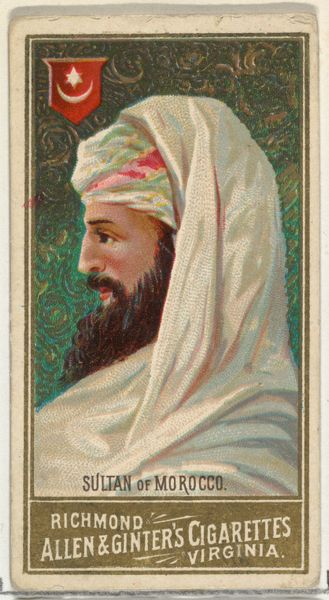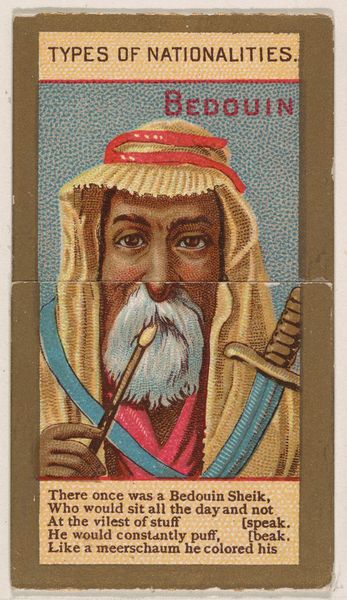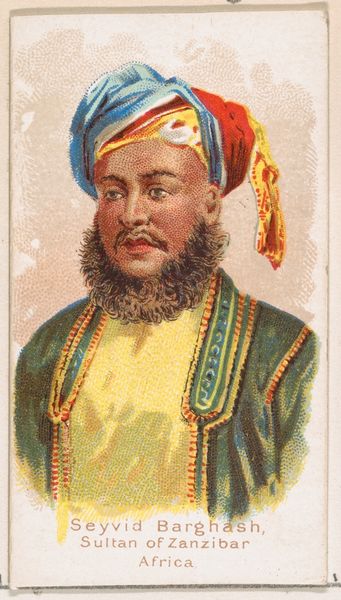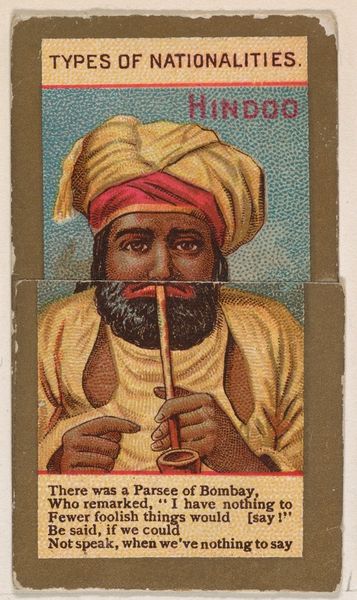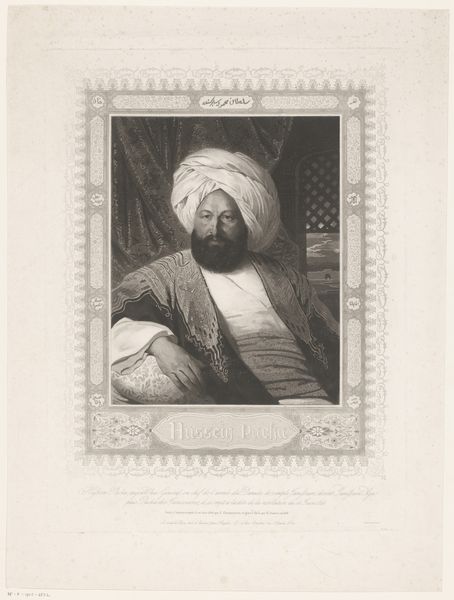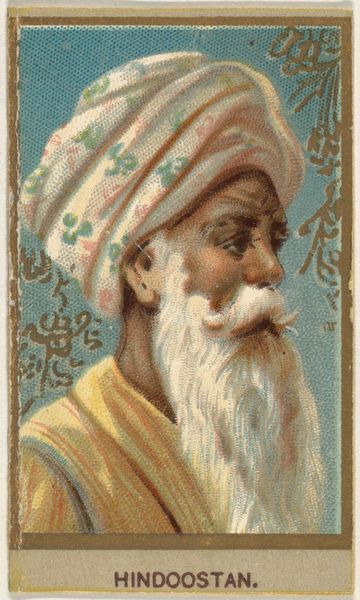
Andalusia, from the Types of All Nations series (N24) for Allen & Ginter Cigarettes 1889
portrait
portrait drawing
portrait art
watercolor
Dimensions: Sheet: 2 3/4 x 1 1/2 in. (7 x 3.8 cm)
Copyright: Public Domain
Curator: Here we see "Andalusia, from the Types of All Nations series," created around 1889 by Allen & Ginter. It’s a color print, essentially a collectible card included in cigarette packs. What's your immediate reaction? Editor: My first thought is how strikingly…composed this is. Even the muted tones suggest a sense of controlled, almost performative, representation of the Andalusian man, fitting within the commercialized framing of ‘exotic’ cultures that were packaged in the cigarette boxes of that era. Curator: Exactly. Cigarette cards served as miniature windows onto a world, both real and imagined, shaping perceptions of far-off places and peoples. This portrait evokes a particular image—the 'noble Moor,' perhaps? The subject's attire certainly harkens back to Andalusia's Moorish past. Editor: Yes, there is a conscious historical conjuring happening here. I can't help but look at his clothing and think of it within the context of Spanish colonialism and the complexities of racial representation inherent in the ‘Types of All Nations’ series. To what extent does it flatten identity? Curator: And yet, observe the face itself. The artist captured a degree of individuality; we see it especially in the depth of his eyes. Even a print, mass-produced, still transmits some semblance of the human spirit. The turban, the gaze, they borrow heavily from earlier Orientalist tropes. What remains distinct is Andalusia's complex visual and cultural heritage—the Islamic and Iberian. Editor: I see it. Although this 'individuality' may be co-opted, packaged for commercial profit, there's also an argument for the inherent political nature of such representations, and their place in visual culture then and now. Who gets seen and how, by whom, and for what purpose... these are the urgent questions the artwork brings forth. Curator: An urgent conversation indeed. What was then meant as trivial consumer material is now laden with historical implications and our modern scrutiny. It is that dialogue across time which gives art such enduring resonance. Editor: Precisely. By investigating pieces like these, especially these bite-sized commercial images, we discover both uncomfortable historical echoes and powerful, unexpected continuities with contemporary culture.
Comments
No comments
Be the first to comment and join the conversation on the ultimate creative platform.
